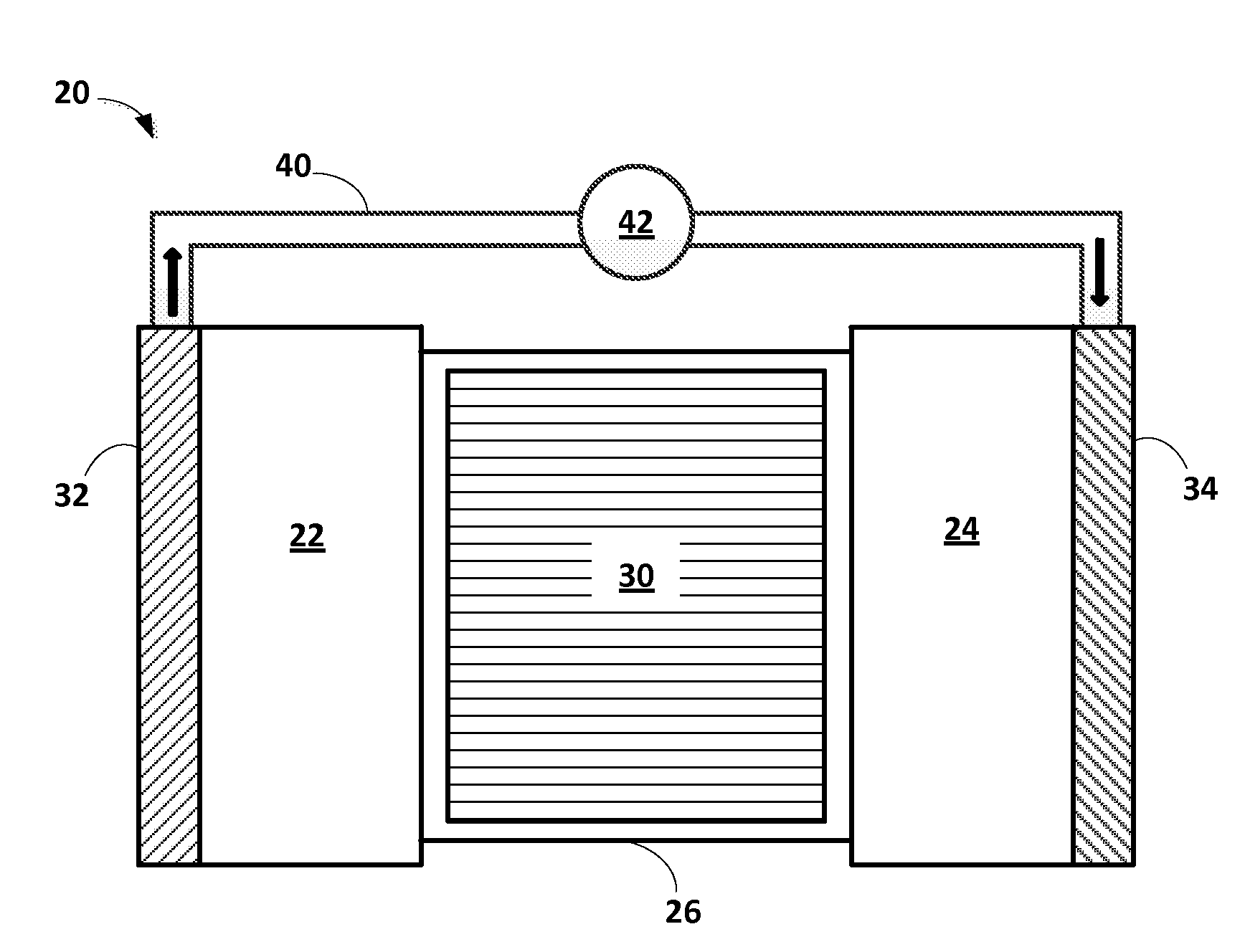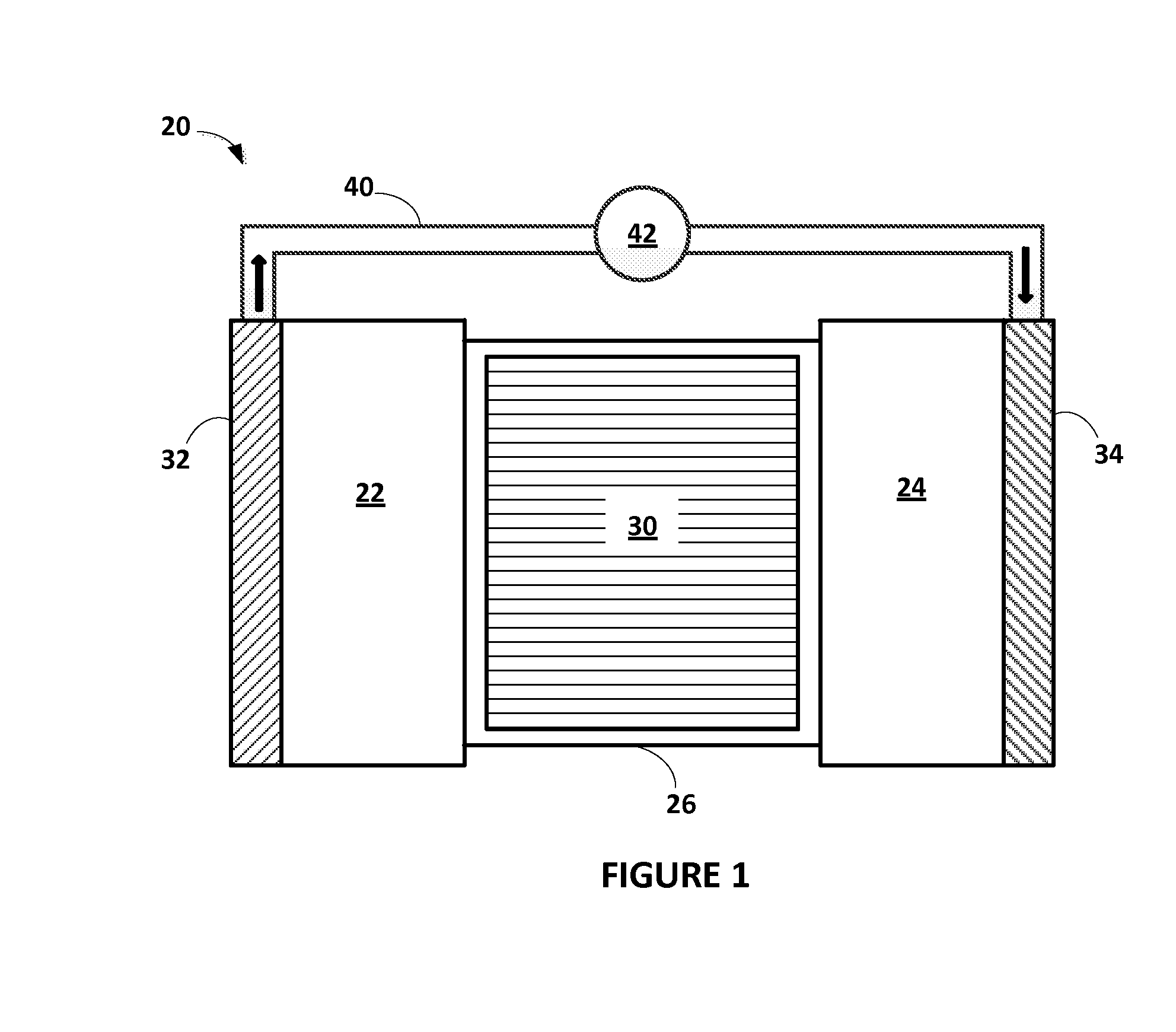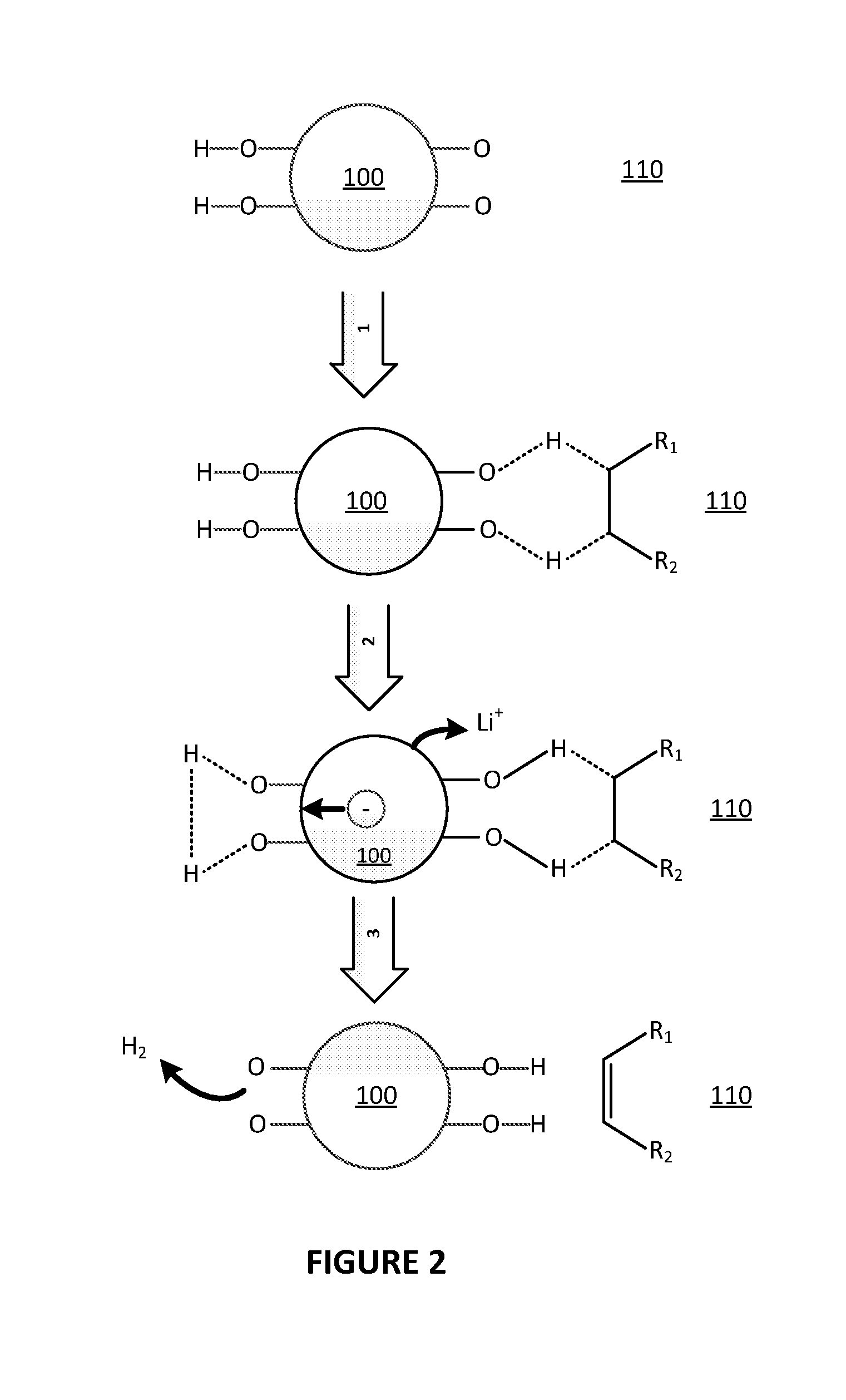Coatings for lithium titanate to suppress gas generation in lithium-ion batteries and methods for making and use thereof
a lithium-ion battery and gas generation technology, applied in secondary cell servicing/maintenance, sustainable manufacturing/processing, cell components, etc., can solve problems such as unsatisfactory choice, and achieve the effect of reducing or suppressing gas generation, less hydrogen, and less hydrogen generated
- Summary
- Abstract
- Description
- Claims
- Application Information
AI Technical Summary
Benefits of technology
Problems solved by technology
Method used
Image
Examples
example 3
[0066]A battery cell having a negative electrode material comprising Li4Ti5O12 (LTO) is coated with aluminum fluoride (AlF3), which is applied via a non-aqueous atomic layer deposition (ALD) at about 120° C. For example, a typical reaction for coating the anode material in a non-aqueous ALD process is 3TiF4+2Al(CH3)3→2AlF3+3TiF2↑+6CHx↑. Thus, a surface coating is formed on the LTO comprising aluminum fluoride (AlF3). The surface coating thickness is around 2 nm. A battery half-cell with LTO as a work electrode, Li foil as a counter electrode, an electrolyte comprising 1M LiPF6 in 50% EC and 50% DEC, and a separator are stored at 55° C. for 100 hours. Gas output is measured and tested via gas chromatography-mass spectrometry (GC-Mass). Testing is conducted at the end of test to determine quantities of gas produced.
example 4
[0067]A battery cell having a negative electrode material comprising Li4Ti5O12 (LTO) is coated with lithium fluoride (LiF), which is applied via a non-aqueous atomic layer deposition at about 120° C. A fluoride-based surface coating comprising lithium fluoride is formed on the LTO by using a non-aqueous ALD deposition process with LiOtBu and TiF4 as precursors in a similar process to that described in Example 3. The surface coating thickness is around 2 nm. A battery half cell with LTO as work electrode and Li foil as counter electrode, an electrolyte comprising 1M LiPF6 in 50% EC and 50% DEC, and a separator are stored at 55° C. for 100 hours. Gas output is measured and tested via gas chromatography-mass spectrometry (GC-Mass). Testing is conducted at the end of test to determine quantities of gas produced.
[0068]Comparative results of gas generation from Comparative Examples 1-2 and Examples 3-4 prepared in accordance with certain variations of the present disclosure are provided i...
PUM
 Login to View More
Login to View More Abstract
Description
Claims
Application Information
 Login to View More
Login to View More - R&D
- Intellectual Property
- Life Sciences
- Materials
- Tech Scout
- Unparalleled Data Quality
- Higher Quality Content
- 60% Fewer Hallucinations
Browse by: Latest US Patents, China's latest patents, Technical Efficacy Thesaurus, Application Domain, Technology Topic, Popular Technical Reports.
© 2025 PatSnap. All rights reserved.Legal|Privacy policy|Modern Slavery Act Transparency Statement|Sitemap|About US| Contact US: help@patsnap.com



